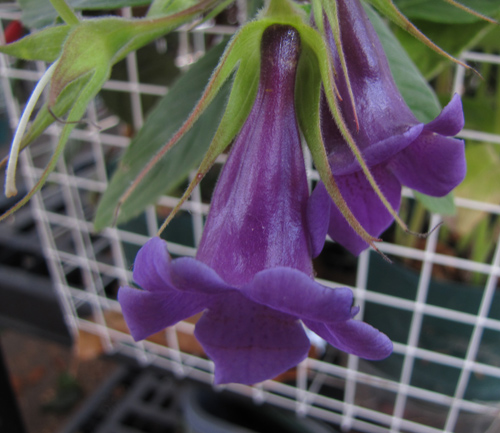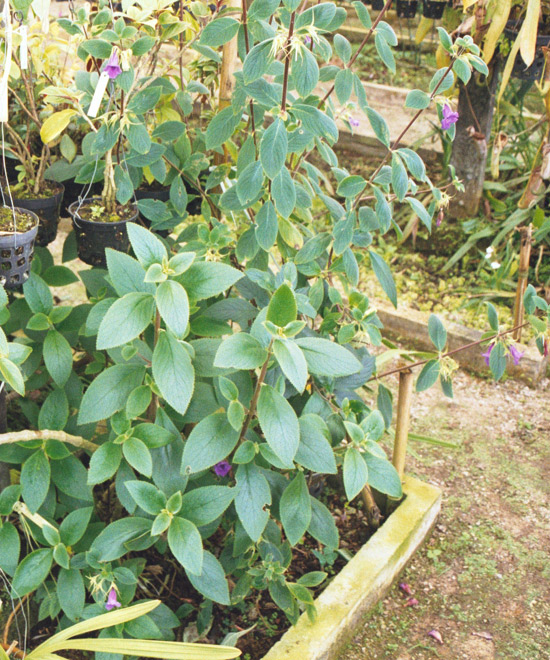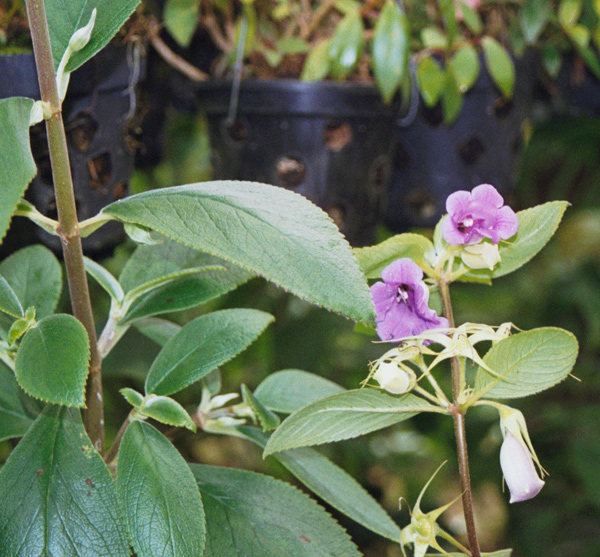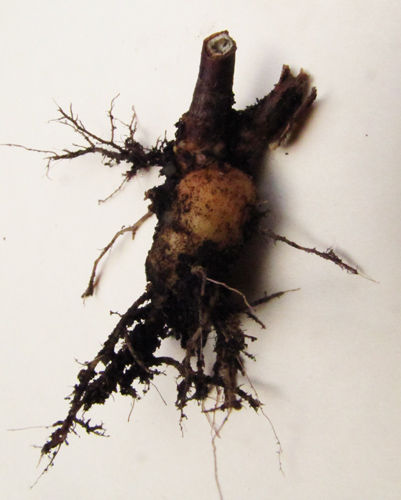|
This photograph shows flowers and flowerbuds on the same plant.
The corollas are campanulate.
This means the flowers are probably bee-pollinated.
The "campanulate flowers" feature has been used to distinguish
paliavanas (non-tuberous sinningias with campanulate flowers) from
vanhoutteas (non-tuberous sinningias with tubular flowers).
The calyx lobes are long and narrow and separate for most of their length.
There are two good calyx examples visible in the picture after the corolla has
fallen -- one in front of the stem at center right, and the second just to the
left of the stem at the bottom of the picture.
Compare with the calyxes in the picture at the top of the page.
The developing flowerbud at the lower right of the picture, with the flimsy
calyx lobes hovering around the unopened corolla, and the even less-developed
flowerbud just underneath the left purple flower show that this species is
a member of the
"free calyx lobes vanhouttea clade",
even though it's a paliavana.
As it happens, the plant right next to it, visible in the left half of the
photo, is something different.
See the flowerbud at the upper left in the picture.
The calyx completely encloses the developing flowerbud.
This feature and the white wool surrounding the flowerbud mark this
as Vanhouttea lanata.
|



